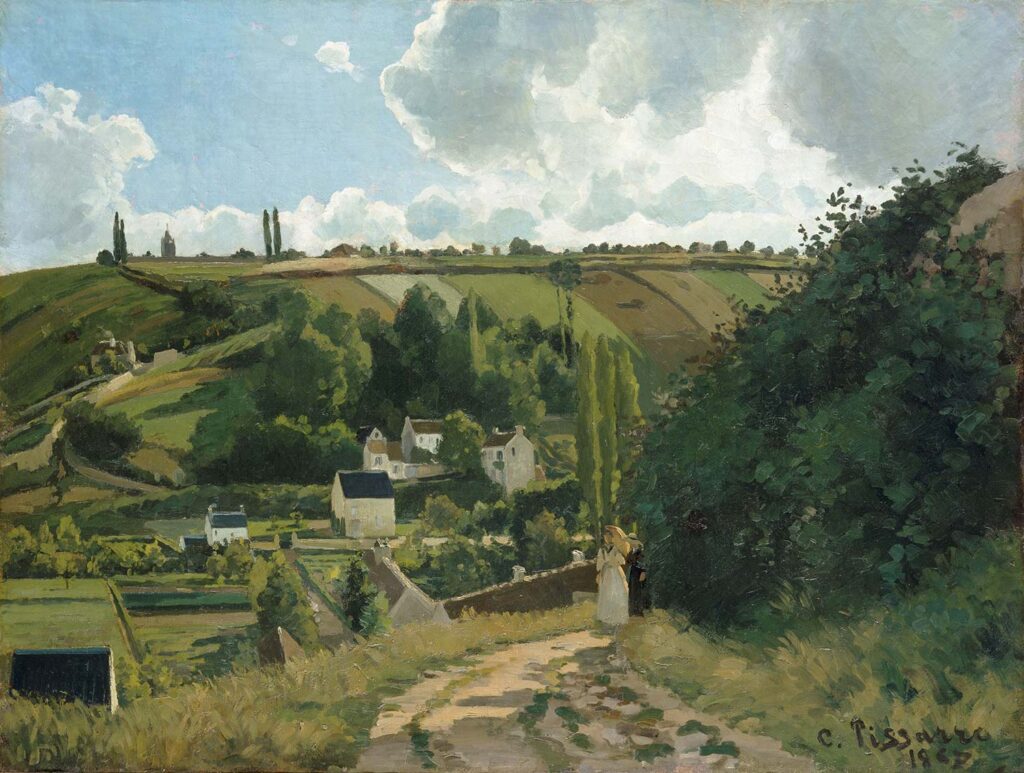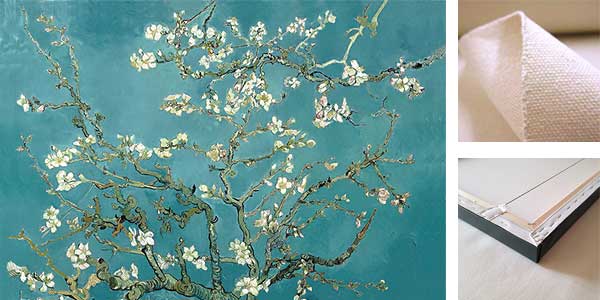
Jalais Hill, Pontoise by Camille Pissarro was created in 1867. The painting is in Metropolitan Museum of Art New York. The size of the work is 87 x 114,9 cm and is made of oil on canvas.
This view of Pontoise, just northwest of Paris, helped establish Pissarro’s reputation as an innovative painter of the rural French landscape. The critic Émile Zola praised the picture enthusiastically when it was shown along with another rustic scene at the Salon of 1868, writing, “This is the modern countryside. One feels that man has passed by, turning and cutting the earth. . . . And this little valley, this hill have a heroic simplicity and forthrightness. Nothing would be more banal were it not so grand. From ordinary reality the painter’s temperament has drawn a rare poem of life and strength.”… Read more in Metropolitan Museum of Art
About the Artist
Jacob Abraham Camille Pissarro (10 July 1830 – 13 November 1903) was a Danish-French Impressionist and Neo-Impressionist painter born on the island of St Thomas (now in the US Virgin Islands, but then in the Danish West Indies). His importance resides in his contributions to both Impressionism and Post-Impressionism. Pissarro studied from great forerunners, including Gustave Courbet and Jean-Baptiste-Camille Corot. He later studied and worked alongside Georges Seurat and Paul Signac when he took on the Neo-Impressionist style at the age of 54.
In 1873 he helped establish a collective society of fifteen aspiring artists, becoming the “pivotal” figure in holding the group together and encouraging the other members. Art historian John Rewald called Pissarro the “dean of the Impressionist painters”, not only because he was the oldest of the group, but also “by virtue of his wisdom and his balanced, kind, and warmhearted personality”. Paul Cézanne said “he was a father for me. A man to consult and a little like the good Lord”, and he was also one of Paul Gauguin’s masters. Pierre-Auguste Renoir referred to his work as “revolutionary”, through his artistic portrayals of the “common man”, as Pissarro insisted on painting individuals in natural settings without “artifice or grandeur”. Read more in Wikipedia
Order a reproduction of this work (printed on canvas)
